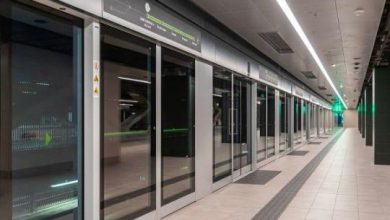Wat Pho’s Marvelous Architecture: A Feast for the Senses

Wat Pho’s Marvelous Architecture: A Feast for the Senses
When it comes to architectural wonders, few places can rival the beauty and majesty of Wat Pho in Bangkok, Thailand. With its intricate designs, vibrant colors, and sheer grandeur, this temple complex offers visitors a sensory experience like no other. In this blog post, we will delve into the mesmerizing architecture of Wat Pho and explore why it is a must-visit destination for any architecture enthusiast.
History and Significance
Originally built in the 16th century, Wat Pho has undergone several expansions and renovations over the years. It is not only one of the oldest temples in Bangkok but also the largest and most revered. The temple complex covers an expansive area of 80,000 square meters and is home to more than 1,000 Buddha images.
Architectural Highlights
1. The Great Chedi
At the heart of Wat Pho lies the Great Chedi, a towering structure that reaches a height of 82 meters. The Chedi is adorned with ceramic tiles, hand-painted intricate motifs, and stunning mosaics. Its golden spire glistens in the sunlight, creating a mesmerizing spectacle.
2. The Ubosot
The Ubosot, or ordination hall, is another architectural gem within Wat Pho. Constructed in the Ayutthaya period, this hall features a blend of architectural styles, including traditional Thai, Khmer, and Chinese influences. Inside, you will find a golden Buddha statue, which is one of the largest in Thailand, measuring an impressive 46 meters in length.
3. The Four Wihan or Vihara
Surrounding the Ubosot are the four Wihan or Vihara halls that house numerous Buddha statues. These halls exhibit intricate wood carvings, gold leaf embellishments, and beautiful murals depicting scenes from Buddha’s life. Each hall offers a unique ambiance and an opportunity to immerse oneself in Thai spiritual traditions.
FAQs about Wat Pho’s Architecture
Q1: Can I enter the temple complex?
Yes, the temple complex is open to the public. However, visitors are expected to dress modestly and respectfully, with covered shoulders and knees.
Q2: Can I take photographs inside the temple?
Yes, you are allowed to take photographs in designated areas. However, photography is not allowed inside the Ubosot.
Q3: Are there guided tours available?
Yes, guided tours are available at Wat Pho. These tours provide in-depth knowledge about the temple’s architecture, history, and cultural significance.
Q4: How much time should I allocate for a visit to Wat Pho?
Plan to spend at least a couple of hours exploring the temple complex to truly appreciate its architectural beauty and the serene atmosphere.
In conclusion, Wat Pho is a masterpiece of architecture that demands to be admired and experienced. Its stunning structures, rich history, and spiritual significance make it a truly remarkable destination for anyone with an appreciation for magnificent buildings. So, don’t miss the chance to visit this architectural gem the next time you’re in Bangkok!



